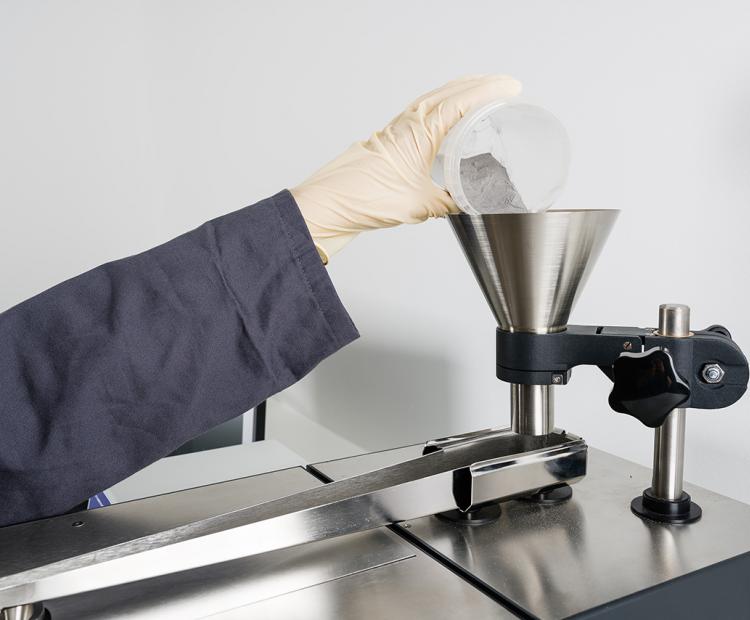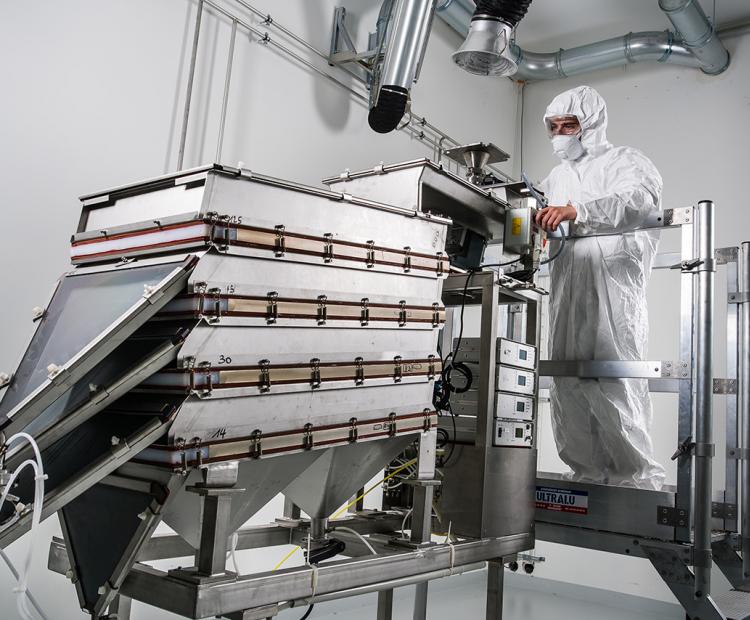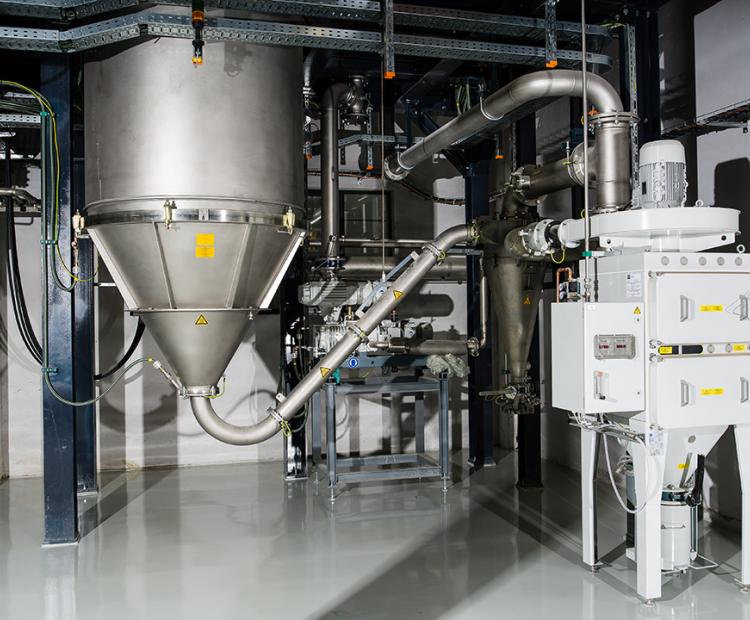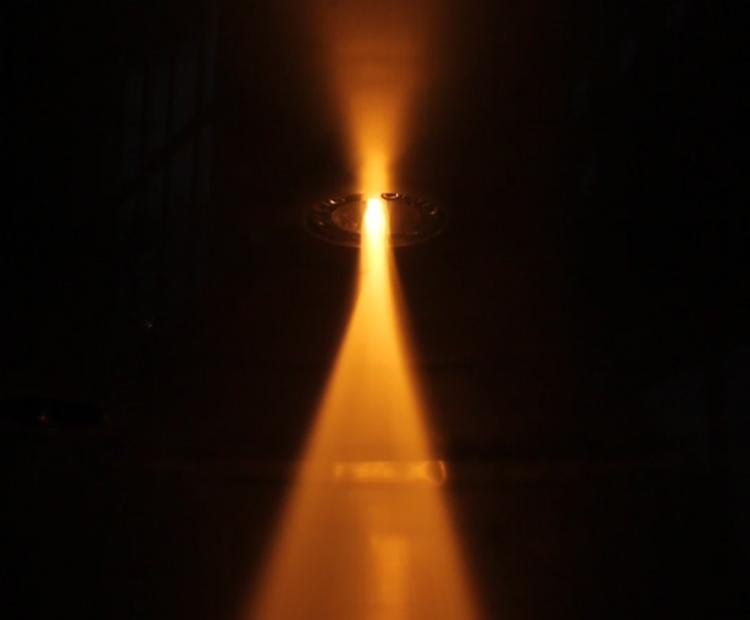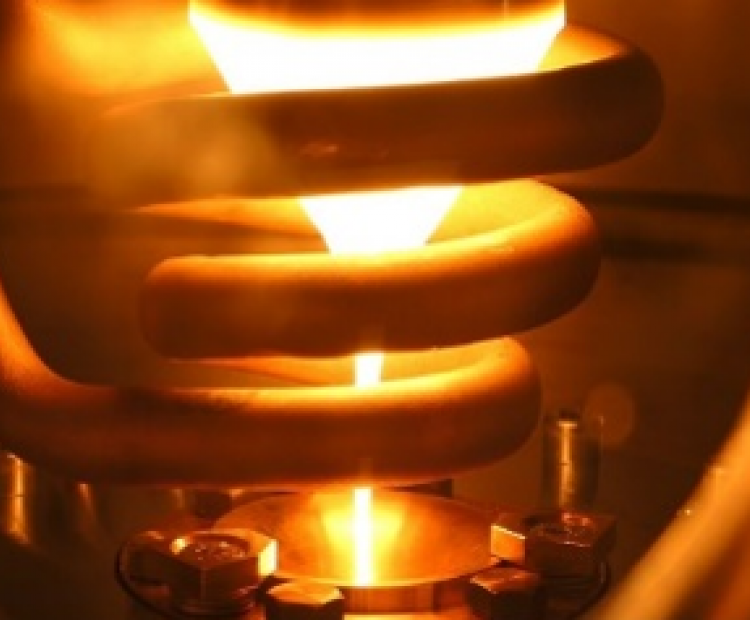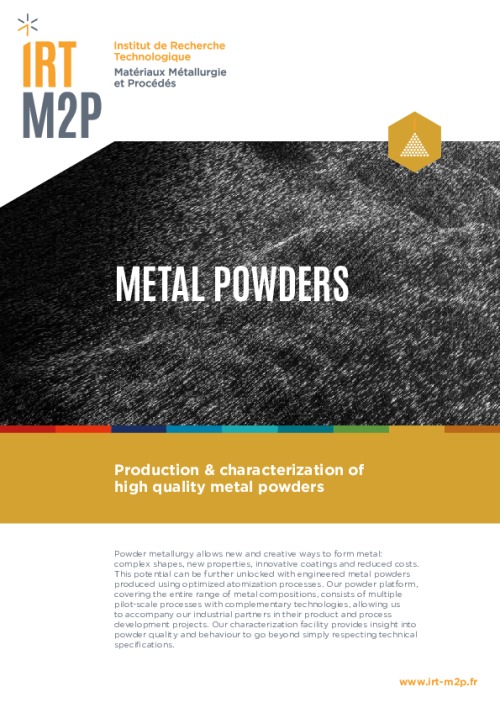Metal powders
Production & characterization of high quality metal powders

Powder metallurgy allows new and creative ways to form metal: complex shapes, new properties, innovative coatings and reduced costs. This potential can be further unlocked with engineered metal powders produced using optimized atomization processes.
Our powder platform, covering the entire range of metal compositions, consists of multiple pilot-scale processes with complementary technologies, allowing us to accompany our industrial partners in their product and process development projects. Our characterization facility provides insight into powder quality and behaviour to go beyond simply respecting technical specifications.
Expertises & Services
- Production of metal powders using gas atomization in pilot or industrial-scale quantities
- Customize chemistry from raw materials to final powder
- Adapted physical properties (size, shape, porosity, surface) for various powder metallurgical techniques
- Studies on the link between operating parameters and powder properties including liquid metal/gas interaction to optimize quality and yield
- Process knowledge transfer and upscaling including industrial-scale installations
- Post-additive manufacturing powder recycling via remelting
- Studies on the surface passivation of reactive metal powders
- Complete powder characterization
- Composition, flowability, particule size distribution, morphology
- Other techniques (spreadability, ageing, etc.) in order to link powder characteristics with performance in various forming processes
- Our independence allows partners to take part in the various production and characterization steps, adding in-depth and first-hand experience
- Quick reaction and turn-over time between your request and delivery
Technology
Gas atomization provides multiple advantages for metal powders including metal quality and sphericity for use in various processes.
The technology at IRT M2P also allows maximum flexibility in terms of available metals, particle sizes and batch quantities between 5 and 200 kg (depending on alloy).
Electrode Induction melting Gas Atomization (EIGA)
Crucible free induction melting: no refractory pollution resulting in ultra-high purity powders
Free-fall argon atomization
Feedstock = pre-existing ingots or electrodes with the possibility to produce these using other furnaces at IRT M2P
Little or no oxygen/nitrogen pick-up between feedstock and powder
Vacuum Induction melting Gas Atomization (VIGA)
Close-coupled atomization for reduced particle sizes
Refractory crucible allows the production of a wide range of alloys and good chemical homogeneity prior to atomization
Possibility to use argon or argon/O2 atomization gas in order to optimize passivation
Sieving under protective atmosphere
Customized batches for various powder metallurgy technologies (LBM, EBM, HIP, SPS, thermal spray etc.)
Characterization
Chemical analysis, physical characterization & powder behaviour
Simulation
The EIGA and VIGA contain multiple sensors and a system to store/ analyze all data with the possibility to validate existing models
Studies on liquid metal/gas interaction
Thermal and high-speed cameras
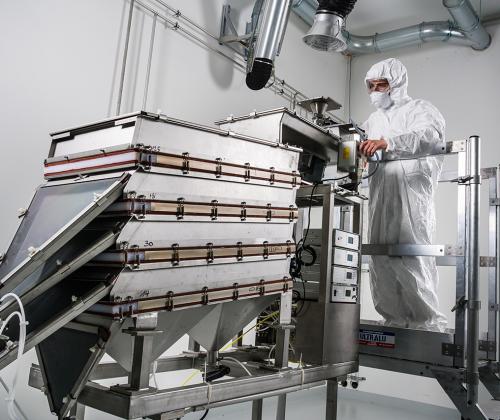
Equipment @M2P
EIGA
Reactive and refractory metals - including titanium and niobium - but also adapted to precious metals, superalloys and iron- or nickel-based alloys
10-75 kg/batch for titanium
VIGA
Aluminum and also iron- and nickelbased alloys
5-80 kg/batch for aluminum
SIEVING
Ultrasonic sieving and storage under inert atmosphere
CHARACTERIZATION
Chemical analysis by X-ray fluorescence or ICP
Dissolved gas analysis : ONH, CS
Particle size distribution analysis - Particle shape analysis - Flowability
Applications
Our range of metal powders is suitable for all additive manufacturing techniques and other powder metallurgy processes, including: Laser Beam Melting - Electron Beam Melting - Direct Metal Deposition – Hot Isostatic Pressing – Spark Plasma Sintering – Thermal Spray and other coatings
Principal markets :
- Aerospace: in particular motors and turbine blades using titanium, aluminium, superalloys or other alloys
- Medical: dental and orthopedic implants in titanium or other metal families
- Transportation: motorsports, rail, other
- Feedstock for various additive manufacturing technologies



